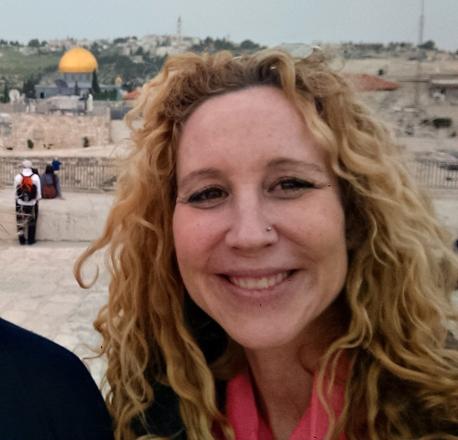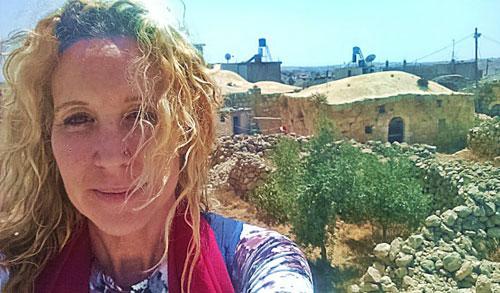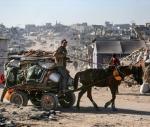You are here
US historian examines regional identification in late-Ottoman Levant
By Saeb Rawashdeh - Sep 07,2017 - Last updated at Sep 07,2017

Susynne McElrone
AMMAN — There is a tendency to assume that villages in the late-Ottoman Levant were satellites of their nearest town and that villagers lived in a "small world" and travelled to the nearest town and back when in need of supplies, according to a US historian.
"This suggests that villagers lived in relatively small worlds, limited to their regions, and it neglects the large network of rural inter-village relations that existed independent of towns," Susynne McElrone, who received her PhD from New York University and came to Jordan as a postdoctoral fellow of Council of American Overseas Research Centres, told The Jordan Times in a recent e-mail interview.
She added that it is also for this reason that people take identifying villagers from the Hebron region as Khalilis and those from the Nablus region as Nablusis for granted.
However, it is not clear when this regional identification developed, she said. "To begin with, Ottoman administrative-district borders were not infrequently redrawn. Secondly, these borders had limited meaning in daily life. Regarding court cases, for example, a Gazan was free to take his case to the Sharia court in Gaza, in Hebron, or even in Salt,” the historian noted.
There was no judicial jurisdiction, the scholar continued, noting that "when we do find, for example, villagers from the area of Nablus in the Hebron court in the late-19th century, they are not identified in the court records as ‘Nablusis’ but, rather, according to the name of their village".
This suggests that there was great mobility between villages across Palestine in the late-Ottoman period, to the extent that a village in the Nablus region was as familiar by name to those in the Hebron court as any village in the Hebron district, without the need to identify the village by its region, she explained.
"Adel Manna [historian specialised in Palestine during Ottoman period] has argued that the Palestinian revolt against Muhammad Ali [Ottoman Albanian ruler of Egypt] in 1834 was a rare case of Palestinians — 'people widely separated' — uniting for a common cause, but I believe available evidence suggests that networks of relations were already in place in 1834, drawing people together. Those networks were used to quickly form a broad oppositional front in 1834," McElrone stressed.
The historical relations — familial and commercial — east and west of the Jordan River are very well-known and well-documented in this period, the American historian said.
"It is odd — and in part we can point to effects of political developments — that more is known about east-west relations over Jordan than north-south relations within Palestine."
In fact, this division by river banks is a 20th century terminology, McElrone stressed, and everyday “inter-regional connections were broader than we imagine existed before trains and cars".
McElrone, who wrote her dissertation on the implementation of Ottoman property-tenure reform in rural Hebron and spent several years in that city, is currently writing a book on the implementation of these reforms in the second half of the 19th century across Palestine.
McElrone pointed out the interconnectedness between Hebron and Karak. "Not only big families like the Majallis and the Amrs were going back and forth and developed familiar commercial connections, but members of smaller families as well also had similar connections," she said.
McElrone’s project covers historical land tenure, which also has implications for the present and the future.
"It is a project that contributes to rural Ottoman history by tracing patterns of land-tenure and the socioeconomic history of land-tenure in the Tanzimat [Reform] era," the historian underlined.
The Ottoman Empire was an agrarian empire with an overwhelmingly rural population, but this population has left the smallest imprint on the written record, making rural history the most difficult to uncover, McElrone concluded.
Related Articles
AMMAN — Ottoman land reforms are poorly understood by historians, according to Susynne McElrone, an American historian specialised in the hi
AMMAN — The transition between two different periods is characterised by varied and complex factors, as was the case with the transition fro
AMMAN — Columbia Global Centres on Tuesday hosted author Isabella Hammad for a book reading and discussion of her debut novel “The Parisian”

















